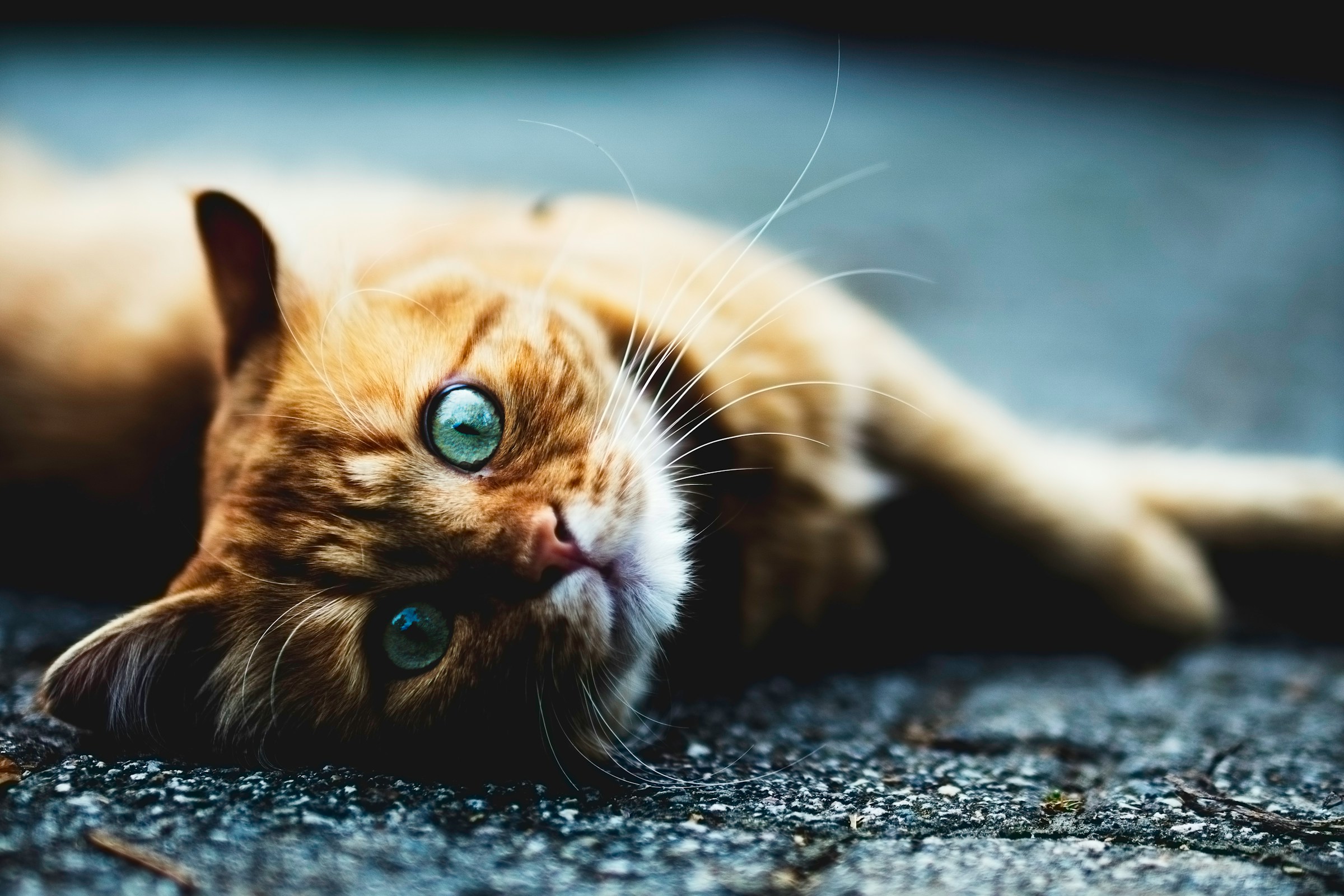Persian cats are known for their luxurious coats, drawing owners into the joy of grooming. However, excessive grooming can lead to hidden dangers that many owners overlook. From skin irritations to behavioral issues, the consequences of an overly meticulous approach can impact your cat's well-being. Understanding these risks is essential for maintaining a healthy and happy feline. Discover key insights that every Persian cat owner should consider to ensure their beloved companion thrives.
Understanding Persian Cat Grooming Needs
Grooming is an essential part of Persian cat care due to their long, luxurious coats. These cats require specific grooming practices to maintain their health and appearance. Regular grooming is crucial, as it prevents matting and tangling, which can lead to discomfort and skin issues. However, excessive grooming can be detrimental, potentially causing stress or skin irritation.
The ideal grooming frequency for Persian cats is daily or at least several times a week. This routine helps in removing loose fur and reducing the risk of hairballs. It also provides an opportunity to check for any skin abnormalities or parasites.
When it comes to grooming tools and techniques, a few essentials are recommended. A metal comb with wide and narrow teeth is effective for detangling. A slicker brush helps in removing loose fur without damaging the coat. For more stubborn mats, a dematting tool can be useful. It's important to be gentle and patient during grooming sessions to ensure a positive experience for your cat.
By understanding and implementing these grooming practices, Persian cat owners can ensure their pets remain healthy and comfortable, while also enjoying a stronger bond through regular grooming sessions.
Health Risks Associated with Excessive Grooming
Excessive grooming in Persian cats can lead to several health issues, particularly affecting their skin. One common problem is the development of skin conditions such as dermatitis, which arises from frequent irritation and scratching. This can cause redness, inflammation, and even open sores if not addressed promptly.
Beyond skin conditions, the overall health of a Persian cat may suffer due to grooming risks. Over-grooming can lead to hair loss, leaving the skin exposed and susceptible to infections. Additionally, the ingestion of excessive hair can result in gastrointestinal problems, such as hairballs or blockages, which may require veterinary intervention.
Behavioral problems are another potential consequence of grooming stress. Cats may start to associate grooming with discomfort, leading to anxiety or aggression during grooming sessions. This stress can manifest in other areas of their behaviour, such as increased irritability or withdrawal from social interactions.
To mitigate these risks, it is crucial to monitor your cat's grooming habits and adjust the frequency as needed. Providing a calm and comfortable environment during grooming sessions can help reduce stress and prevent the onset of these health issues.
Identifying Signs of Over-Grooming
Understanding the over-grooming signs in Persian cats is crucial for maintaining their health. Physically, over-grooming can manifest as bald spots or thinning fur, particularly in areas like the belly or legs. These signs indicate that the cat is licking or biting excessively, which can lead to skin irritation or infections.
Behavioral indicators are also telling. A Persian cat that is over-grooming might seem restless or anxious. You might notice your cat grooming more frequently or intensely than usual, even when there's no apparent need. They may also become irritable or withdrawn, avoiding social interactions or showing signs of stress during grooming sessions.
It's important to know when to seek veterinary advice. If you observe persistent over-grooming signs or behavioral changes, consult a vet. They can rule out underlying health issues such as allergies or parasites, which may be contributing to the over-grooming. Additionally, a vet can provide guidance on managing stress-related grooming behaviors, ensuring your Persian cat remains healthy and comfortable.
By addressing these signs promptly, you can prevent potential health complications and maintain your cat's well-being.
Balancing Grooming Routines
Maintaining a grooming balance is essential for Persian cats to ensure their well-being without causing undue stress. Establishing a healthy grooming routine involves understanding your cat's unique needs and temperament. Each Persian cat may have different preferences and tolerances, so it's crucial to tailor the grooming schedule accordingly.
Begin by observing how your cat reacts to grooming sessions. Some may enjoy daily grooming, while others might prefer less frequent sessions. Adjust the grooming schedule based on these observations to keep your cat comfortable and stress-free. Consistency is key; maintaining a regular routine helps your cat become accustomed to grooming, making it a positive experience.
To minimize grooming stress, create a calming environment. Use gentle techniques and tools that suit your cat's coat type. Speak softly and offer treats or praise to reinforce positive behaviour during grooming. Taking breaks if your cat becomes restless can also help in reducing anxiety.
Understanding individual needs is vital. Some Persian cats may require more frequent grooming due to their coat's density, while others might need less. By respecting your cat's temperament and preferences, you can achieve a harmonious grooming routine that promotes their health and comfort.
Preventative Measures for Grooming-Related Issues
To effectively manage grooming prevention in Persian cats, adopting a proactive approach is essential. Preventative care can significantly reduce the risk of skin issues and other health complications. One strategy is to ensure your cat's coat remains clean and free of tangles, as this minimizes irritation and potential infections. Regularly using appropriate grooming tools can help maintain the coat’s condition.
Health maintenance through routine veterinary check-ups is crucial. These visits allow for early detection of any underlying issues that might be exacerbated by grooming practices. Vets can provide tailored advice on grooming routines and address any concerns regarding your cat's skin and coat health.
Nutritional support plays a vital role in maintaining a healthy coat. A balanced diet rich in omega-3 and omega-6 fatty acids can enhance skin health and promote a shiny, resilient coat. Including high-quality proteins and essential vitamins in your cat’s diet is also beneficial.
By combining these strategies, Persian cat owners can effectively manage grooming-related issues, ensuring their pets remain comfortable and healthy. Engaging in preventative care not only supports the cat's physical well-being but also fosters a positive grooming experience.
Expert Advice on Persian Cat Grooming
When it comes to grooming Persian cats, insights from veterinarians and grooming professionals are invaluable. Veterinarians emphasize the importance of gentle handling to avoid skin irritation. They recommend using tools specifically designed for long-haired breeds to prevent pulling and discomfort. Regular check-ups with a vet can also ensure that any grooming-related issues are identified early.
Professional groomers advise on selecting the right grooming tools. A metal comb and slicker brush are essential for maintaining a Persian cat's coat. Groomers also highlight the importance of maintaining a consistent grooming schedule to prevent matting and tangling. They suggest starting grooming sessions when the cat is young to build a positive association with the process.
For those seeking further education on grooming health, resources such as online courses and workshops are available. These can provide detailed guidance on advanced grooming techniques and the specific needs of Persian cats. Books and articles written by grooming experts can also offer valuable insights.
By utilizing expert tips and veterinarian advice, Persian cat owners can create a grooming routine that promotes their pet's health and comfort, ensuring a positive experience for both the cat and the owner.
Community Insights and Owner Experiences
Connecting with the cat community provides invaluable insights into Persian cat grooming. Many owners share personal stories about the grooming challenges they face. For instance, dealing with persistent matting or a cat's aversion to certain grooming tools is a common theme. These experiences highlight the importance of understanding individual cat preferences and adapting grooming techniques accordingly.
Community forums serve as a rich resource for exchanging grooming advice and tips. Here, owners discuss everything from selecting the right grooming tools to managing a cat's anxiety during grooming sessions. Such platforms allow for the sharing of tried-and-tested methods, helping others navigate similar challenges. Engaging in these forums can also provide emotional support, knowing others face similar hurdles.
Support networks play a crucial role in managing grooming issues. They offer a sense of camaraderie and encouragement, essential for owners dealing with grooming stress. Being part of a supportive community can lead to discovering new solutions and approaches that might not be immediately apparent.
By participating in these networks, Persian cat owners can enhance their grooming routines, ensuring a healthier and more comfortable experience for their pets.






